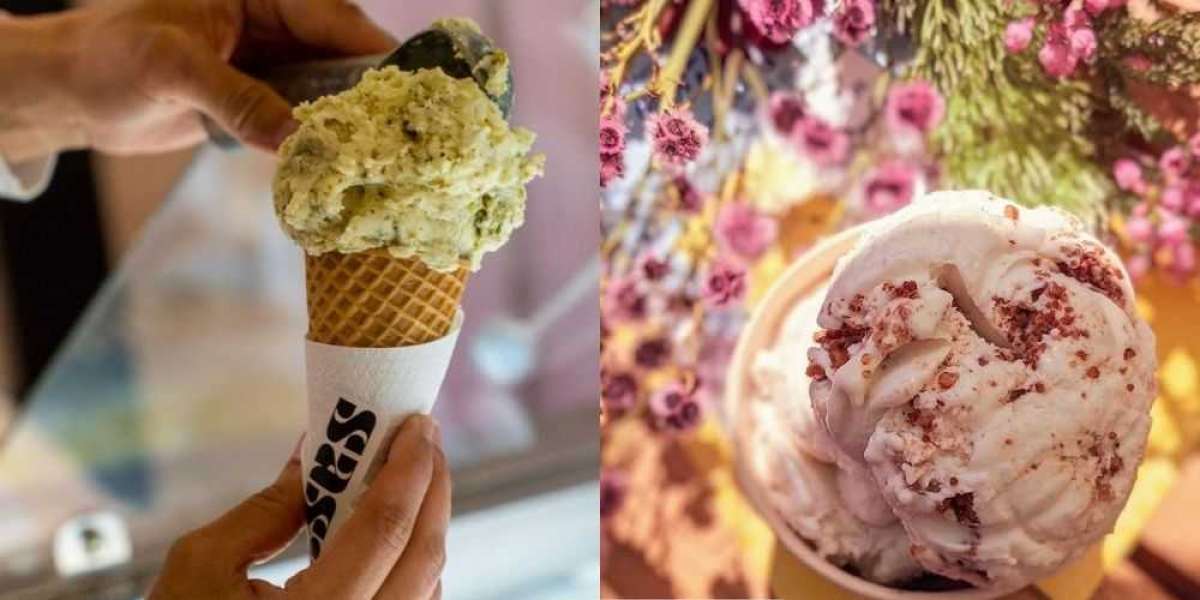Ice cream is a popular dessert in Japan and holds a significant presence in the country's food culture. Japan Ice Cream Market is estimated to grow at a CAGR of 2.96% for the forecast period between FY2024-FY2031 and reach USD 6.77 billion in FY2031 from USD 5.36 billion in FY2023. Factors such as changing consumer preferences, innovation in flavours and formats, and a focus on health and wellness are likely to drive the market. Additionally, increased emphasis on convenience, e-commerce, and expanding retail channels are expected to contribute to the market's expansion.
There has been a growing demand for premium and artisanal ice cream products in Japan. Consumers are increasingly seeking unique and high-quality flavours, textures, and ingredients. Ice cream manufacturers are focusing on creating innovative and experiential products to attract consumers. Seasonal and limited-edition ice cream products are popular in Japan, especially during festivals and specific times of the year. These products often feature flavours and designs that align with a particular season or occasion. Though, traditional yet unique flavours such as matcha (green tea), black sesame, wasabi, sakura (cherry blossom), hojicha (roasted green tea), yuzu (Japanese citrus), and azuki bean are a preferred choice of consumers, there is also a demand for international flavours such as chocolate, vanilla, strawberry, and more adventurous options.
Recently, in May 2023, the Japanese ice cream brand Cellato, by Omer, introduced the world’s more expensive ice cream costing over USD 6400 which made it gain a title in Guinness World Records.
Impulse Ice Creams, a Highly Preferred Choice
On-the-go or single-serve ice creams are referred to as impulse ice creams which are widely popular in Japan as their unique packaging and bit-sized portion make them a preferred option among consumers who want to have a quick consumption of ice cream. Impulse ice creams lead the Japan ice cream market with a prominent market share followed by take-home ice cream which is forecast to register a faster growth rate owing to the increasing consumption of ice cream during winter.
Increasing Popularity of Vegan Ice Creams
Veganism has been gaining popularity across the globe including Japan where more than 2% of the country’s population (over 2.5 million people) are vegan. Other than veganism, lactose intolerance, shifting changes in consumer lifestyles, and environmental concerns are all factors behind the switch towards a plant-based diet which in turn is fueling the demand for non-dairy-based ice creams in Japan. Currently, there are not many options for vegan ice creams in Japan and this can act as a great opportunity for market players who are willing to expand their presence in Japan or are looking towards broadening their product portfolio.
Garigari-Kun, a popsicle by a Japanese ice cream company Akagi Nyugyo is an icy treat that comes in a wide range of flavors such as strawberry, cola, pineapple, and pink grapefruit also suitable for vegans. Nearly 400 million of these popsicles are consumed in Japan, annually.
Unique Packaging and Focus on Textures Toppings
Manufacturers are continuously introducing new and innovative flavours to cater to these changing consumer preferences. Texture plays a crucial role in consumer preferences for ice cream. Japanese consumers often value a smooth, creamy, and rich mouthfeel in their ice cream. Products with unique textures, such as chewy mochi or crunchy toppings, are also well-received. To stay competitive and meet evolving consumer preferences, ice cream manufacturers in Japan constantly innovate and introduce new flavours, formats, and experiences. They closely monitor consumer trends and preferences to adapt their product offerings accordingly. For instance, Lotte Co., Ltd., a Japanese confectionery company, produced an ice cream Yukimi Daifuku which is a mochi covered vanilla ice cream. Moreover, Japanese manufacturers focus on featuring impressive, eye-catchy and innovative packaging designs, especially to attract children as their audience.
Health and Wellness Trends
Health and wellness trends have had a significant impact on the ice cream market, including in Japan, though dairy-free products have a small market in Japan. Gradually, the demand for premium and added-value products is growing in the country. Consumers are seeking healthier options in their food choices, including ice cream. This has led to a rise in demand for ice cream products that are lower in sugar, fat, and calories. To their surprise, when Shizuoka-based EECO, a Japanese producer of organic foods, rebranded their handmade organic plant-based ice cream in the middle of 2020, it quickly sold out. Manufacturers have responded by developing healthier alternatives, such as low-sugar, low-fat, and reduced-calorie ice creams. Plant-based ice creams, often made from ingredients like almond milk, coconut milk, or soy milk, provide alternatives for those who avoid or are intolerant to dairy products. These options have gained traction in the market, catering to a growing segment of health-conscious and environmentally-conscious consumers. The main factor influencing this shift is health concerns.
Impact of COVID-19 on the Japan Ice Cream Market
The COVID-19 pandemic had a notable impact on the ice cream market in Japan, as it had on the global food and beverage industry. With the implementation of lockdowns, social distancing measures, and temporary closures of food service establishments, there was a notable decline in out-of-home consumption of ice cream. Ice cream parlours, cafes, and restaurants faced reduced foot traffic or complete closures, leading to a significant decrease in sales from these channels. Consumer concerns about safety and hygiene increased during the pandemic. Ice cream manufacturers and retailers implemented strict safety measures, such as enhanced sanitation protocols, contactless delivery options, and modified packaging to ensure consumer confidence and address health and safety concerns. The impact of COVID-19 on the ice cream market continues to evolve as the situation progresses. The industry's recovery and future growth will depend on factors such as vaccination rates, changes in consumer behaviour, and the overall economic landscape.
Japan Ice Cream Market: Report Scope
"Japan Ice Cream Market Assessment, Opportunities, and Forecast, FY2017-FY2031F”, is a comprehensive report by Markets Data, providing in-depth analysis and assessment of the current scenario of the ice cream market in Japan, industry dynamics and opportunities, and forecasts (FY2024-FY2031). Additionally, the report profiles the leading players in the industry mentioning their respective market share, business model, competitive intelligence, etc.
Click Here:https://www.marketsandata.com/industry-reports/japan-ice-cream-market
About Us:
Markets and Data provides a comprehensive/ panoramic understanding of markets at global, regional, and country levels. Examine changing consumer preferences, emerging challenges, underlying trends, and growth prospects to accelerate your business strategies.
Latest Reports:therapeutic-drug-monitoring-market
Contact
Mr. Vivek Gupta
5741 Cleveland street,
Suite 120, VA beach, VA, USA 23462
Tel: +1 (757) 343-3258
Email: info@marketsandata.com
Website: https://www.marketsandata.com








